News Archive
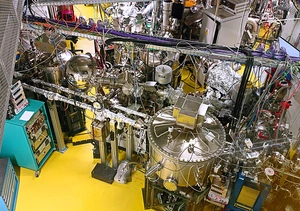
New instrument at BESSY II for investigating energy materials
OÆSE endstation in EMIL offers insights into dynamic electrochemical processes:
A new instrument is now available at BESSY II for investigating catalyst materials, battery electrodes and other energy devices under operating conditions: the Operando Absorption and Emission Spectroscopy on EMIL…

Ultrafast Plasmon-Enhanced Magnetic Bit Switching at the Nanoscale
MBI researchers demonstrated a way to control and manipulate nanoscale magnetic bits:
Researchers from Max Born Institute have demonstrated a successful way to control and manipulate nanoscale magnetic bits — the building blocks of digital data — using an ultrafast laser pulse and plasmonic gold…

Technology development for semiconductor material gallium oxide launched
At IKZ, a new application laboratory will be set up to produce epitaxial wafers for components in power electronics:
The EFRE project G.O.A.L. “Gallium Oxide Application Laboratory for Power Electronics”, which was launched in September 2024, completes the value chain created at the IKZ in the field of gallium oxide technology…

A cage structured material transforms into a performant catalyst for producing green hydrogen
The promising material class of clathrates was investigated at BESSY II:
Clathrates are characterised by a complex cage structure that provides space for guest ions too. Now, for the first time, a team has investigated the suitability of clathrates as catalysts for electrolytic hydrogen…
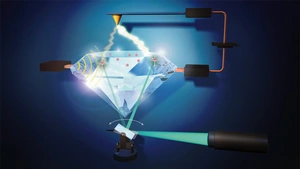
An elegant method for the detection of single spins using photovoltage
The approach of an HZB team could lead to a much more compact design of quantum sensors:
Diamonds with certain optically active defects can be used as highly sensitive sensors or qubits for quantum computers, where the quantum information is stored in the electron spin state of these colour centres.…

New research unit to study the generation, transport and detection of chiral phonons
DFG funds spintronics research with 3.2 million euros / MBI involved:
Spintronics is already widely used in data storage, sensor technology and, increasingly, in communication technology. Many of our cars and cell phones already contain components based on spintronics. Spintronics means…
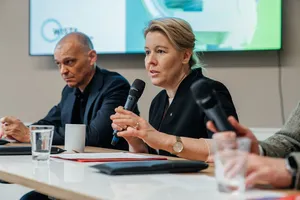
Berlin Adlershof: Companies surpass 4 billion euros in revenue for the first time and continue to be optimistic about the future
Germany’s largest Science and Technology Park doubles its revenue in just eight years:
The Science and Technology Park Berlin Adlershof continued its positive development in 2024. Revenues and budget funds rose by 3.5% to over 4.0 bn. euros (2023: 3.9 bn. euros). The number of employees grew by 1,100 to…

Berlin Adlershof: Facts and figures
Berlin Adlershof is Germany’s largest and most successful Science and Technology Park as well as Berlin’s largest media location—embedded in an overall urban development concept. Spanning an area of 4.6 km², the park…

Initiative launched for better use of data in the energy sector
OEO Foundry aims to make energy research more efficient, transparent and sustainable:
At the end of March, representatives of the Reiner Lemoine Institute (RLI) of the Universities of Osnabrück and Oldenburg as well as the affiliated institute OFFIS – Institute of Computer Science founded the Open…

FBH leads European diode-pumped laser efforts
EuPRAXIA selects second laser-driven accelerator site:
The EuPRAXIA consortium has selected ELI Beamlines at ELI ERIC in the Czech Republic as the site for its laser-driven second plasma-accelerator pillar. This decision marks a major milestone in the consortium’s journey…

Heat storage for a climate-neutral Berlin
RLI project shows potential for better use of waste heat and renewable energy:
Berlin must make its heat supply climate-neutral – this is what the Heat Planning Act stipulates. Heat storage systems play a central role in this. This shows a joint project by the Reiner Lemoine Institute (RLI), the…
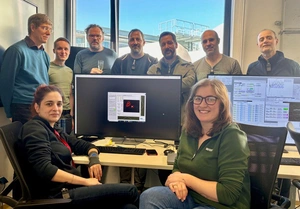
Breakthrough: First electron beam in SEALab advances accelerator physics
HZB team generates and accelerates an electron beam from a multi-alkali photocathode:
The SEALab team at HZB has achieved a world first by generating an electron beam from a multi-alkali (Na-K-Sb) photocathode and accelerating it to relativistic energies in a superconducting radiofrequency accelerator…

Optical innovations for solar modules – which are the most promising?
Experts provide a comprehensive overview of the state of solar research:
In 2023, photovoltaic systems generated more than 5% of the world’s electrical energy and the installed capacity doubles every two to three years. Optical technologies can further increase the efficiency of solar…
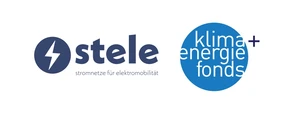
STELE supports electromobility and the electricity grid in Austria
The platform for networking stakeholders ensures faster results in the expansion of charging infrastructure:
With more and more battery-electric trucks and buses on Austria’s roads, the need for charging infrastructure and the demands on the electricity grid are increasing. To support this ramp-up of e-mobility, the Reiner…
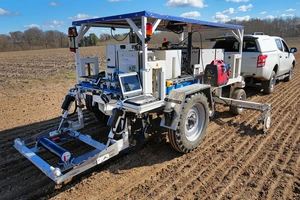
Efficient soil analysis – high-tech for sustainable agriculture
Mobile sensor platform from Leibniz Institutes ATB and FBH can precisely detect the composition of soil on the move:
Precise information about agricultural soils is key to managing them more efficiently and sustainably. Researchers at the Leibniz institutes FBH and ATB have recently enhanced an existing sensor platform for mobile…

Launch of Repower Regions – Transforming Europe's Heating and Cooling Sector
Steinbeis-SIT joins a project focused on decarbonisation, digital skills, and sustainable solutions in Europe’s heating and cooling sector:
Steinbeis School of Sustainable Innovation and Transformation (SIT), affiliated with Steinbeis University GmbH, dedicates itself to delivering exceptional educational programmes and offering guidance in innovation and…

Creative comics against biodiversity loss
BioYouToon, an Erasmus+ project, aims to sensitise young people and raise awareness of biodiversity:
The project consortium of BioYouToon, an EU-funded Erasmus+ project, met at the end of March 2025 to share the results developed during the funding period. The highlight was five Webtoon Comics, available online in…

Catalysis research with the X-ray microscope at BESSY II
Scientists studied changes in catalysts during the synthesis of ammonia from waste nitrates:
Contrary to what we learned at school, some catalysts do change during the reaction: for example, certain electrocatalysts can change their structure and composition during the reaction when an electric field is…
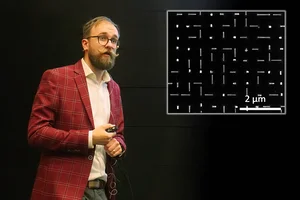
Owen C. Ernst awarded the DGKK Young Scientist Prize 2025
IKZ graduate honoured by the German association for crystal growth DGKK:
This year, the Deutsche Gesellschaft für Kristallzüchtung und Kristallwachstum e.V. (DGKK) awards IKZ graduate Dr. Owen C. Ernst with the Young Scientist Award, endowed with 2500 €, for his outstanding scientific…
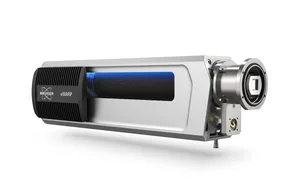
Bruker introduces a new EBSD detector for advanced materials characterization
eWARP combines direct electron detection and CMOS technologies:
Bruker announces the launch of eWARP, a new detector for Electron Backscatter Diffraction (EBSD) that marks the advent of a new era in EBSD technology. Featuring a revolutionary Bruker-engineered camera that combines…